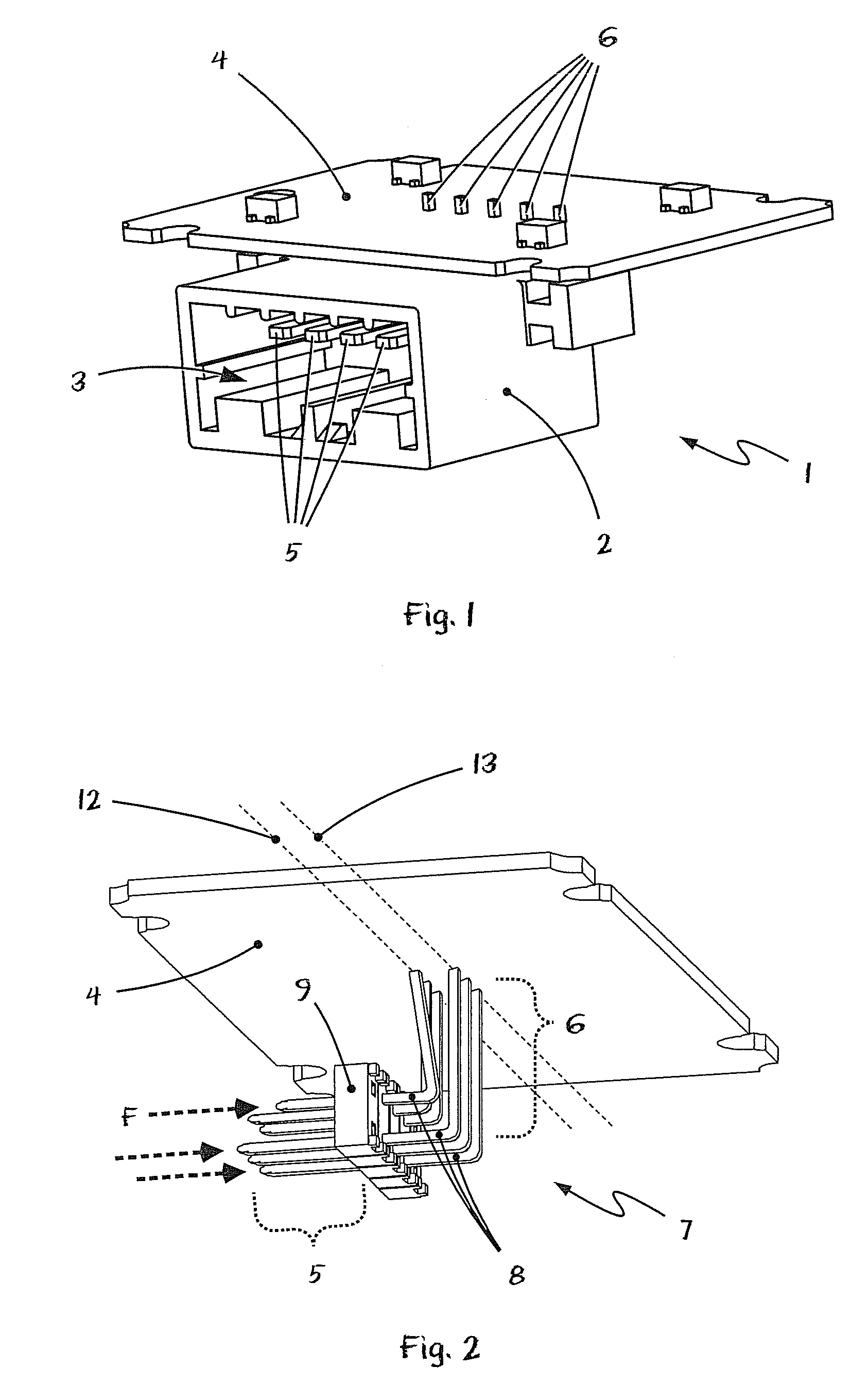Double-row angle pin connector
a technology of angle pins and connectors, applied in the direction of coupling contact members, fixed connections, coupling device connections, etc., can solve the problems of insufficient protection of angle pins of such connectors, inability to reliably guarantee the intended flow of current, and excessive plugging forces, etc., to overcome the drawbacks of the state of the art and achieve reliable operation.
- Summary
- Abstract
- Description
- Claims
- Application Information
AI Technical Summary
Benefits of technology
Problems solved by technology
Method used
Image
Examples
Embodiment Construction
[0031]Referring to the drawings in particular, FIG. 1 shows an isometric view of an angle plug 1 according to the state of the art. The plug pins 5, 6 or the angle pins are firmly extrusion-coated with a housing material 2 in the standard angle plug 1 being shown. The printed circuit board 4 as well as the angle pins with the patch plug-side ends 5 and with the soldered ends 6 passing through the printed circuit board are recognized next to the plug housing 2 with an inner contour 3 for receiving the plug of a cable harness.
[0032]Even though the angle plug 1 shown in FIG. 1 comprises only a single row of angle pins, angle pins with contact or angle pins arranged in two rows are, in principle, likewise formed usually by the extrusion coating of the angle pins with the housing material of the angle plug and thus they correspond, in principle, to the view shown in FIG. 1.
[0033]Angle plugs according to FIG. 1 have the advantage that all contact or angle pins are fixed immovably by the e...
PUM
 Login to View More
Login to View More Abstract
Description
Claims
Application Information
 Login to View More
Login to View More - R&D
- Intellectual Property
- Life Sciences
- Materials
- Tech Scout
- Unparalleled Data Quality
- Higher Quality Content
- 60% Fewer Hallucinations
Browse by: Latest US Patents, China's latest patents, Technical Efficacy Thesaurus, Application Domain, Technology Topic, Popular Technical Reports.
© 2025 PatSnap. All rights reserved.Legal|Privacy policy|Modern Slavery Act Transparency Statement|Sitemap|About US| Contact US: help@patsnap.com



